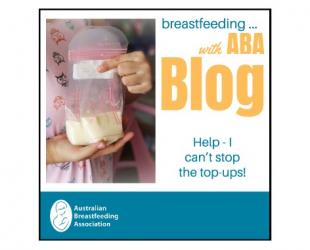Finding the right balance for you, your baby, and your milk supply.

Some mums find themselves mixed feeding – combining breastfeeding with formula – for a variety of reasons. Some start after offering top-up formula feeds, while others choose to replace certain feeds with formula.
Some mums successfully combine breastfeeding and formula feeding for many months, while others may find it challenging to keep their milk supply up. The more formula your baby takes, the less milk your breasts will make.
If you want to introduce formula but are concerned about your milk supply, there are ways to help maintain it. Breastfeeding more frequently and offering the breast before formula are two ways to support your supply. Your child health nurse or lactation consultant can help you work out how much formula to offer so your supply doesn’t drop further.
If you are offering top-up formula feeds
- Breastfeed your baby from both sides before offering a formula top-up.
- You can offer both breasts again after a short break, before a top-up.
- Offer only small top-ups if you're concerned about keeping up your supply.
- Use paced bottle-feeding techniques to avoid over-feeding formula.
- Some babies may come to prefer drinking from a bottle than the breast which can lead to breast refusal. This can be a very upsetting if you want to keep breastfeeding.
If you are replacing certain feeds
- Know how much breastfeeding you need to do to keep your supply going.
- Be consistent with the feed you are replacing and the amount of formula you offer.
- If your baby seems hungry at other times, offer more breastfeeds.
- Use paced bottle feeding techniques to help your baby continue to enjoy breastfeeding.
Need information about formula?
The Australian Breastfeeding Association provides information free from commercial influence.
ABA supports you
Whether you're breastfeeding, using formula or both, we support you to make the decisions that are right for your baby and your family, based on reliable information.
If you're feeling disappointed about your feeding decisions or worried about how feeding is going, it's important to find a supportive person to talk to. ABA counsellors on the Breastfeeding Helpline can reassure you that you can have a close bond with your baby however you're feeding them.
© Australian Breastfeeding Association October 2025





